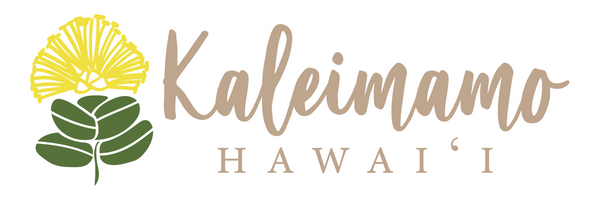Nā Manō
This print was inspired by the ʻōlelo noʻeau (Hawaiian proverb), “Pua ka wiliwili, nanahu ka manō; when the wiliwili tree blooms, the shark bites.” Native Hawaiians possess a detailed understanding of our environment and are keen to observe the timing and connection between different natural phenomena. Each year, in late summer and early fall, the blooming of the orange wiliwili flowers also signals the peak pupping season of Hawaiʻi’s tiger sharks.
While very rare, data shows that most shark attacks in Hawaiʻi also occur in the fall.


The ʻōlelo noʻeau continues, “Pua ka wahine uʻi, nanahu ke kānāwai; when a pretty woman blossoms, the law bites.” This is said in reference to a beautiful woman attracting young men (the manō) who are fighting for her attention. The law steps in to keep the rivalry from getting out of hand.
Wiliwili often grows in some of the harshest terrain, where other species struggle to survive. Wiliwili seeds and flowers are used to make beautiful lei and its lightweight wood was the preferred choice for making traditional papa he‘e nalu (surfboards).
Manō are highly revered in Hawaiian culture. Their skin was used for various items including pahu (drums) and their teeth for weapons. Sharks are ʻaumākua (family guardians) to some ʻohana, and are fed and cared for. Metaphorically, manō can be used to refer to a passionate lover.
This print was created in partnership with the talented, Native Hawaiian artist and graphic designer, Joelle Ihilani Birano of SoPupuka.
Check out ʻŌlelo Noʻeau: Hawaiian Proverbs and Poetical Sayings by Mary Kawena Pukui for more traditional Hawaiian sayings.

